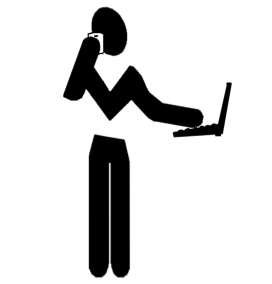Follow Up step of the Encounter Process

The first thing that can happen in this phase is that all the good work done during the encounter is … forgotten. Everybody’s personal Hurry Monster takes over. Other encounters and events occupy available mental bandwidth. Soon, just about the only vestige of our last meeting becomes the date of the next one. As a result, when we all get together again, people’s memories of agreements are fuzzy and a significant portion of the work has to be reviewed – perhaps even renegotiated. Cans of worms reopen, to the frustration of all involved.
What is needed, of course, is a written record of the meeting outcome and its action points. An email of the meeting minutes is usually adequate, and techniques for the effective use of email are discussed in Chapter 11. This record is both a stimulus for agreed actions and, for actions that are foreseen but not taken, a reference point to return to. I am not suggesting that it be used to shame others into action: rather, that a written record helps to avoid arguments about who said who would do what.
This phase can also serve as a kind of cooling off period. For example, I might use it to verify that certain ideas which came up during the encounter are implementable. This could involve technical and legal due diligence work – are the ideas OK from the engineering point of view, and do they meet confidentiality, business, procedural and other requirements?
Finally, notice that the Follow Up phase makes the Encounter Process recursive, since other Encounter Processes may result from it. In Chapter 12, for example, I will discuss the business of following up on commitments using assistance from colleagues. This will involve meetings and, hence, the Encounter Process.
More about The Encounter Process:
- The Encounter Process top
- The Encounter is a Theory We Use
- Challenge example: it isn’t just about relationships – process matters too
- Challenge example: jumping ahead too quickly
- The Obstacle Course
- The Encounter Process explained
- Prepare step of the Encounter Process
- Engage step of the Encounter Process
- Do step of the Encounter Process
- Check step of the Encounter Process
- Follow Up step of the Encounter Process
- The Encounter Process in brief
Get the Client Encounters of the Technical Kind book!
